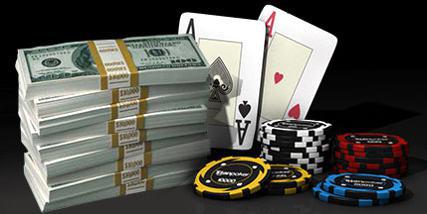For centuries, playing cards have been a part of our lives. It is one of the oldest methods used for entertainment and communication throughout the world. From Asia to Europe, people have used different decks of cards to play games like poker, blackjack, and solitaire that allow them to have a good time with family, friends, or even strangers.
While many consider this game to be a common pastime during parties or get-togethers, it is quite interesting how luxurious the history of the card game has been since ancient times. Here you take a step back in history and immerse yourself in the fascinating evolution of playing cards!
The first origin of playing cards
It is believed that the first playing cards were invented in China in the 9th century, although it is unclear exactly when they became popular. The earliest known reference to card games dates back to the Tang Dynasty (618-907 AD) when a book written by Su E mentions people playing “leaf” games with paper money.
The use of paper money in card games became widespread throughout China, and by the 12th century the practice had spread to other parts of East Asia. Playing cards eventually made their way to Europe in the 14th century, where they were introduced as a more affordable alternative to expensive, painted tarot decks.
The earliest European cards were hand-coloured and used for games, including the popular card game Tarocchi.
Ultimately, playing cards were printed in Germany and Italy in the 15th century, although they did not become widespread in Europe until the 16th century.
Today, playing cards are still incredibly popular for both entertainment and gambling. They have been used as a form of entertainment for centuries and are still relevant today.
Many societies around the planet have started playing the card game, and some nations even have their own interesting plans. No matter where they come from, playing cards gives people a charming way to unwind.

What were the playing cards made of?
The earliest realized card games were made in China in the ninth century and were made using a material called “sheet paper”. Sheet paper was an early type of paper made by grinding mulberry fibers into fine sheets. Although these card games were different from today’s games, they actually used many of the same images we know today, such as the four suits of spades, clubs, jewels, and hearts.
The main playing cards in Europe were made of wood and carved with different images and designs. Eventually the printing press was developed and the game of cards was effectively produced on paper. This allowed for far more stunning plans and a wider range of varieties than wooden charts could provide.
By the 18th century, paper playing cards were widespread in Europe and America. Today, playing cards are available in a variety of materials, including plastic and even metal. However, no matter what material is used, the traditional costumes and symbols remain the same.
Game card types today
Playing cards today come in many types, depending on the game and the preferences of the players. Standard playing cards are often divided into four suits (clubs, diamonds, hearts, and spades), each including the numbers 1 through 10, as well as face cards such as jacks, queens, and kings.
Other card games use their own types of playing cards, such as tarot cards or Uno cards.
Some games use special decks with additional features such as wildcards, double-faced cards, or unique shapes and sizes.
No matter what type of card game you play, the fun part is challenging yourself and your friends to see who can come up with the best strategy to win.
Popular card games
One popular game is solitaire, which requires the player to sort cards into four piles according to their numerical value, from lowest to highest.
Another favorite is Crazy Eights, in which players try to get rid of all their cards by matching the number or suit of the top card in the discard pile.
Go Fish is another classic card game where players ask each other for different cards to try and make a complete set.
For a more strategic game, there is Rummy, which requires players to create “combinations” (sets of three or four cards of the same rank) in order to win.
Finally, there is War, a simple game that requires no strategy or skill and can be fun for players of all ages.
There are also some more complex card games that challenge experienced players. Bridge is one of the most popular and challenging of them all, requiring strategic thinking, teamwork and communication.
Poker is getting more and more popular due to its complexity, with different variations suitable for players of all levels.
Other fun card games include blackjack, spades, and trick games like hearts, whist, and ewker.
